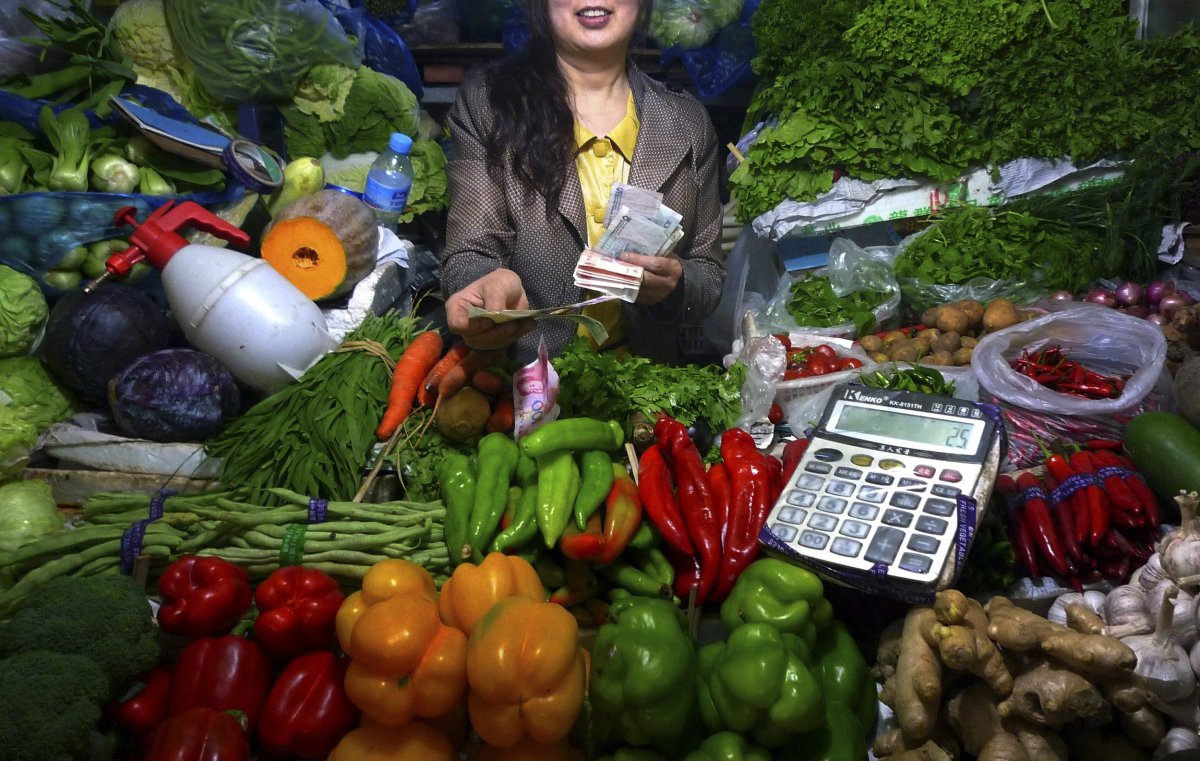
Saving the planet—specifically reducing your carbon footprint and curbing climate change—might be a little easier than expected. It could be as simple as eating a healthier diet.
Food production accounts for an estimated 19 to 29 percent of global greenhouse gas emissions—a majority of which are from agriculture. Nearly a third of ice-free land is used for food production as well. It can also increase eutrophication—which is an excess of fertilizers and animal waste that causes an overgrowth of algae and suffocates creatures living in bodies of water.
That adds up to quite a toll on the environment—that said, we still need to eat.
Researchers set out to discover if following nationally recommended diets from 37 different countries would lessen food production's impact on the environment. Those recommendations generally call for eating less meat and more vegetables, fruits and nuts—though the changes vary from country to country.

The study, published in the Proceedings of the National Academy of Sciences on Monday, revealed that in high-income countries, greenhouse gases from food production would drop between 13 and 25 percent; eutrophication would fall 10 to 21 percent; and land use by 6 to 18 percent. In lower-income countries like India and Indonesia, the results differed. The environmental impact would increase if individuals followed the nationally recommended diet, but that is likely because many people in lower-income countries do not consume as many calories as their governments recommend.
"At least in high-income countries, a healthier diet leads to a healthier environment," Paul Behrens, an environmental scientist at Leiden University in the Netherlands and lead author, told the Los Angeles Times. "It's win-win."
Behrens and his colleagues used a massive database representing the entire world economy, which allowed them to track the environmental costs of various types of foods—from production to dinner tables. The environmental impact of the same foods can vary between countries, which was also taken into account.
"Dietary recommendations can be a great way to talk about human health and the health of the environment," Behrens told the Times. "The main point is you can win both ways."
Meat reduction was evident for nearly all countries in order to follow the respective national recommendations. Animal products, including meat, fish and dairy, account for 22 percent, 65 percent and 70 percent of emissions in the diets of lower-middle, upper-middle, and high-income nations, respectively. Maintaining protein requirements for individuals while decreasing greenhouse gas emissions could be considered in dietary recommendations by substituting meat-based proteins with plant-based sources, the study noted.
The nutrition component of animal product reduction was evaluated in a study back in September, which found that removing all animals from U.S. agriculture would reduce greenhouse gas emissions from agriculture by 28 percent and reduce overall U.S. emissions by 2.6 percent. The unintended consequence of that, however, was some nutritional deficiencies.
On an individual basis, an entirely meat-free diet may work. Scaling up to millions of people is a different task altogether.
"Absolutely for individual people on a vegetarian, a vegan, an omnivore diet, you can probably carefully craft a diet that can meet your nutritional needs," Mary Beth Hall, co-author of the September study and dairy scientist at the U.S. Department of Agriculture, told Newsweek in November. "The challenge we've got—and the basis of our study—is when you try to convert that into an entire nation, you run into some challenges based on what foods we can actually grow."

A study published on Monday found that if Americans reduce their beef consumption by half, the beef industry could become environmentally sustainable. Of course, that's based on what the authors identify as environmentally sustainable, which was defined as cattle raised on grassland (pasture and locally baled hay) and on by-products from the food industry.
According to the researchers' model, reducing the average amount of beef consumption of 460 grams to 200 grams per week would do the trick for sustainable beef production. Plus, abandoning less productive pastures could still sustainably deliver 43 percent of current beef production.
A balance between a healthy diet and a healthy environment can be achieved, as the author of the study on dietary recommendations, Behrens, suggested. Finding that balance may well be necessary, as the United Nations predicts that the population will surge from 7.6 billion to 11.2 billion by the end of the century.
That means there will be around 3.6 billion more mouths to feed.
Uncommon Knowledge
Newsweek is committed to challenging conventional wisdom and finding connections in the search for common ground.
Newsweek is committed to challenging conventional wisdom and finding connections in the search for common ground.
About the writer
Sydney Pereira is a science writer, focusing on the environment and climate. You can reach her at s.pereira@newsweekgroup.com.
To read how Newsweek uses AI as a newsroom tool, Click here.








